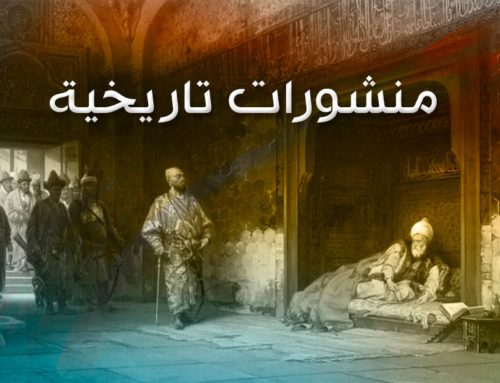A woman’s head or hair covering is masculine, rather than a Qur’anic ordinance) غطاء رأس المرأة أو شعرها حكم ذكوري وليس قرءانيًا
A woman’s head or hair covering is masculine, rather than a Qur’anic ordinance)
God Almighty said:
{And tell the believing women to reduce ‘some’ of their vision and guard their vulvas (private parts) and not expose their adornment except that which ‘necessarily’ appears thereof and to wrap ‘a portion of’ their covers over their chests and not expose their adornment except to their husbands, their fathers, their husbands’ fathers, their sons, their husbands’ sons, their brothers, their brothers’ sonاs, their sisters’ sons, their women (new social relations in women’s life with males such as the son-in-law, the stepson, the foster sun) and whom they own through what is agreed upon by contracts and agreements, or those male attendants having no physical desire, or children who are not yet aware of the private aspects of women. And let them not stamp their feet (let them not do what might bring about displaying their congenital beauty to men: such as dancing) to make known what they conceal of their adornment. And turn to Allah in repentance, all of you, O believers, that you might be successful. [Nur: 31].
Now, the examiner in the entire Qur’anic text does not find the word head or hair mentioned or used in the texts related to the woman’s dressing, nor does he find the word concealment or covering up, the fact that confirms from the beginning that there is no definitive indication to the necessity of covering the head or the hair. It also confirms that working hard for a rule stating the necessity of covering the head or the hair from the Qur’an is but a suspected or fake one.
This presumptive result chosen by a specific authority does not nullify the possibility of the verity of the other result. The presumptive indication of the text is inherent to it, and it is not annulled through the many statements of one and the same opinion apart from the other. Nor is it removed through the fact that either one “of the two opinions” is earlier in time or earlier presented or applied, or more popular in history. Again, the absence of the opposite of either opinion in a period of time no matter how short or long, or the application of the first society that witnessed the text’s descent …etc, all that is no refutation of any other judgement about the head or hair cover.
As a matter of fact, the argument is, indeed, present in the Qur’anic text itself and in what refers to it. {Say, “What thing is greatest in testimony?” Say, ” Allah is witness between me and you. And this Qur’an has been revealed to me that I may warn you thereby and whomever it reaches. Do you [truly] testify that with Allah there are other deities?” Say, “I will not testify.” Say, “Indeed, He is but one God, and indeed, I am free of what you associate ‘with Him’”}. [Anaam: 19]. {And when Our verses are recited to them as clear evidences, those who do not expect the meeting with Us say, “Bring us a Qur’an other than this or change it.” Say, “It is not for me to change it on my own accord. I only follow what is revealed to me. Indeed I fear, if I should disobey my Lord, the punishment of a tremendous Day.”} [Yunus: 15].
As for the Sunnah, (Prophet Muhammad’s actual application of Quran’s messages), it is a practical method related to worshipping rites and its function is never legislation. The Great Prophet said: (Pray as you saw me praying).
As for the prophetic hadeeth (sayings) whose reference sequence is valid and its text is authentic, it is an interaction of the Prophet related to his time and place according to his epistemic tools. It is never correct to make it a legislative source. The Almighty commanded His Messenger saying {Say, “Come, I will recite what your Lord has prohibited to you. [He commands] that you not associate anything with Him, and to parents, good treatment, and do not kill your children out of poverty; We will provide for you and them. And do not approach immoralities – what is apparent of them and what is concealed. And do not kill the soul which Allah has forbidden [killing it] except by [legal] right. This has He instructed you that you may use reason.”} [ Anaam: 151].
{And when it is said to them, “Follow what Allah has revealed,” they say, “Rather, we will follow that which we found our fathers doing.” Even though their fathers understood nothing, nor were they guided?} [ Bakara: 170].
All fiqh / doctrinal opinions that obligated women’s head covering in the heritage excluded the Qur’an from study and reference, and relied on understanding and applying the first society that saw the descent of the Qur’anic text and the frequency of this practice historically in every society to our contemporary day!
Let’s discuss the meaning and significance of the Quranic text, as we are concerned with the discourse, just like all other people, {Say “O mankind, indeed I am the Messenger of Allah to you all, to whom belongs the dominion of the heavens and the earth. There is no god except Him; He gives life and causes death.” So believe in Allah and His Messenger, the unlettered prophet, who believes in Allah and His words, and follow him that you may be guided.} [Araf: 158].
The text prohibits the woman from displaying her adornment, including commanding her to cover up, and it excludes from the adornment that appears from the beginning on its own spontaneity, about which is the Legislator said nothing. Thus, He took it out from the field of forbiddance into the field of permissibility. It is well known that the permissible doesn’t necessitate action, but rather, it presents the choice between doing or not doing it. That, actually, depends on a person’s preference according to his or her interests unless it is related to the community’s public affairs. In that case, the individual conforms to the law whether it is forbidden, permissible or obligatory. That is a positive system, with no sanctity, liable to changes according to the changes in circumstances and occasions.
The heritage scholars said: Adornment is divided into two parts: the section that the Legislator ordered to cover, which they called (the hidden adornment). The other section is that which the Legislator allowed to show and they called it (the apparent adornment). Then, they headed to define the meaning of adornment as (spatial:related to location) which is the hidden part of the adornment, (and the objects which are the places of apparent adornment. Thus, they gave the first hidden adornment the rule of the necessity to cover, and gave the apparent adornment the judgement of permission for appearance.
Thus, they identified the places of the apparent adornment through the adornment of the Arab woman who witnessed the descent of the legislative Text, and decided that it is: the eyeliner, nose ring, ear earrings, and the position of the necklace, rings and bracelets. So, they concluded from that that these places, represented by the face and the hands, are those meant by the apparent adornment, which is Not to be covered of necessity.
They said: The hidden decorations are something other than the places of adornment in a woman’s body already mentioned above. Hence, they are such things as the anklets, what the woman places on her arm, chest, and the like; they all must be covered and not displayed.
And since the Qur’anic text is a discourse for all people, valid for all time and all place, and the content of its movement is both human and global, so inferring from the application of the Arab women adornment norms and restricting the denotation of the text to her decoration is invalidated, because history is not a legislative source, and the text must be activated and directly dealt with.
The woman as a whole is adornment except for (the vulva), which was previously commanded to be covered in the Almighty’s words: (and guard their vulvas i.e. private parts ). This guarding begins from concealment and covering via physical and hygienic purity, and ending with preservation against indecency. That is because the text is related to the question of clothing. Unlike the other text, which is (and who guard their vulvas i.e. private parts), where preservation starts from the fortification against indecency and ends with concealment and coverage, where the verb (ظهرَ) “which means appeared on its own or in spontaneity” in the text does not refer to others (lookers or seers), but rather, it refers to the adornment itself, since it is an apparent decoration from the original adornment.
{and not expose their adornment except that which [necessarily] appears thereof}, where actually referring the verb (ظهرَ) to (seers, lookers) is invalidated in reality seeing that the woman is wholly apparent to the onlookers / seers.
This leads to a contradiction between the beginning and the end of the text and, because the result will be that the woman would not cover anything from her adornment since she is all apparent before the public eye. If the meaning were what they mentioned, the text would come as (ما ظهرَ لكم i.e. what appears/ed to you) and not as in the form of ( ما ظهرَ منهاi.e. what appears/ed from it).
Likewise, the concept of the places of adornment for women is movable and changing from one society to another and from time to time according to different cultures and cognitive development. Hence, what is a place of adornment for one society is not adornment for another. Thus, the position of the places of adornment in human societies differs. Indeed, that is an evidence of the invalidity of the classical concept of adornment according to the heritage due to the inability to define it. Therefore, those of that opinion demanded that the understanding of the Qur’anic text be restricted to the understanding of the ancestors so as to get rid of the movement of the textual content.
In fact, with that demand they assassinated the mind, rendering the Quran a national text related to the Arab culture in a specific time and place, and they abused the humanity of the Qur’anic text and its universality. They had become one of the basic decadence factors of the Muslims and their backwardness in the face of the march of human civilization.
Now, as for the sentence {and to wrap their covers over their chests}, they said: The veil is a cover for the head, inferred from the line of poetry:
Tell the beauty with the black veil … what have you done to the worshiper?
They missed that using the word connotation for one possibility and one form, actually, does not cancel out the truth of the possibilities of other forms for the connotation of the word.
The cover is a cover regardless of the place of coverage, whether it is the head, the body, or other places. The text did not use the imperative verb form of hiding or covering, but rather it used the verb (يضربنَ), which indicates laying of something on something else leaving some effects. It is used in the same way as (ضرب الأمثال : to set examples), and (ضرب الرقاب : striking necks i.e beating the force centers of the enemy), and the like. Moreover, the text did not use the word (head) but rather, it used the word (جيوب) which is the plural of (slit جَيب:) that denotes the opening between two things.
The slit in the clothes is known, and hence they mentioned that the slits are the openings of the clothes on the side of the neck, and this slit is one of the aspects and possibilities in clothes. Look at the Almighty’s saying to Moses: {And insert your hand into your pocket (clothes’ slit), and it shall come out white without any illness} [An-Naml: 12].
The meaning of the word (جيوبهن their cloths’ slits) is (holes: slits) in a woman’s clothes, the legislator ordered and stressed the process of laying/overlapping/wrapping when a woman (sets out/walks out) on the ground in her usual pursuit and activity, i.e. when she wants to go out into public life, she must make sure that these holes are closed and tight so that no holes should appear to people through them, which is what he Legislator ordered to be covered in the previous ordinance in the form of a prohibiting expression (and not expose their adornment …).
Where is the sense of necessity of covering the head or hair in this sentence {and to wrap their covers over their chests (clothes’ slit)}? Unless they count that the head itself to be a slit! In spite of that assumption of theirs, that reasoning is not valid because it clashes with the issue that went before it, as it came in the exclusive form {and not expose their adornment except what appeared of its own…} This restriction, in fact, means the closure against what comes later, and it does not allow the introduction of anything into the content from another text.
In fact, what the Legislator has given the decree of permissibility in the form of a limitation /confinement does not allow another text to give it the ordinance of obligation or forbiddance. That is, in particular. because the order to overlap/lay the cover on the clothing slits does not mean covering neither in terms of language nor logic, even though it had mostly happened as a result of the overlapping process but without intent to do so. After all, what is meant by the overlapping/laying on the clothes’ slits is to keep what is inside covered and not what comes out of them.
When the scholars found no Qur’anic proof, they resorted to the purposes of legislation, cognizant that they do not accept those purposes as a divine legislative source, because the rule says: (There is no commitment except through legislation / Shari’a), (and the rule in things and actions is permissibility except what is otherwise stated in the Qur’anic text).
In fact, the concept of the legislation purposes goes along with the legal texts within a dialectical relationship, otherwise the concept of purposes would become a gate for developing endless legislation, changing from one society to another at the same time, and thus religion becomes a plaything in the hands of clergymen, who would forbid and legalize according to what they see in the purposes.
As for the verse: {O Prophet, tell your wives, your daughters and the women of the believers to bring down over themselves of their outer garments. That is more suitable that they will be known and not be abused. And ever is Allah Forgiving and Merciful.} [Ahzab: 59], it is not a legislative text, but rather a speech to the Prophet to guide and teach women to choose clothes that would protect them from social harm and achieve knowing them on the part of people. Because, actually, the form of dress denotes culture, and it is a message of communication between women and men, either as cultural or sexual discourse. Hence, a woman has to choose the way to communicate with men, as the (جِلباب /jilbab/ i. e. garment) is a dress that achieves protection and knowledge for people about women. So, the text has no indication to the head covering ever.
Consequently, the Islamic Community should elevate and refrain from waging a fictional battle raised by the West or by some groups in the East in such matters, because they’re not from religion at all.
After all, it is prudent that a person should not be evaluated by his or her clothing and form, nor should they be denied or blamed to wear it for their clothing, because people are free in their lives.
In conclusion, the judgement that a woman’s head or hair should be covered came from outside the Quran; from the practice of societies with male understanding and environmental conditions. In fact, it is absolutely not a Qur’anic ordinance. On the other hand, it is not correct to build or establish a legal rule from outside the Qur’an, and the prophetic hadiths (sayings) are only the Prophet’s interaction with the conditions of his time and what works for it. Thus, he ordered and forbade according to the interest of the time, and his orders are not in the least part of religion. So, it is not correct to make them a religious source, and whoever makes them a religious source beside the Qur’an would have made for himself a Mishnah like the Mishnah of the Jews, which they duplicated on the Torah and made it dominate and eliminate it.







اضف تعليقا